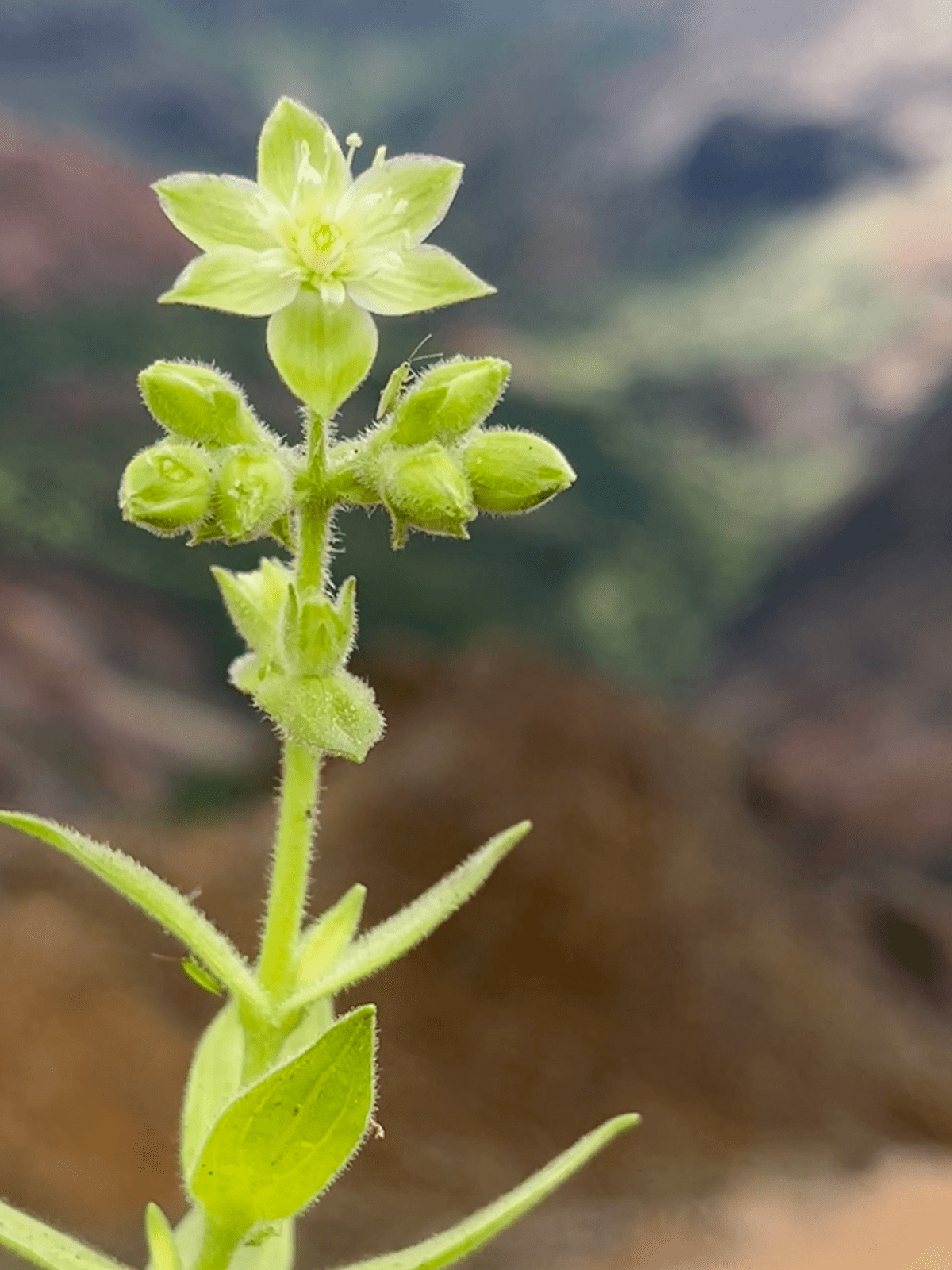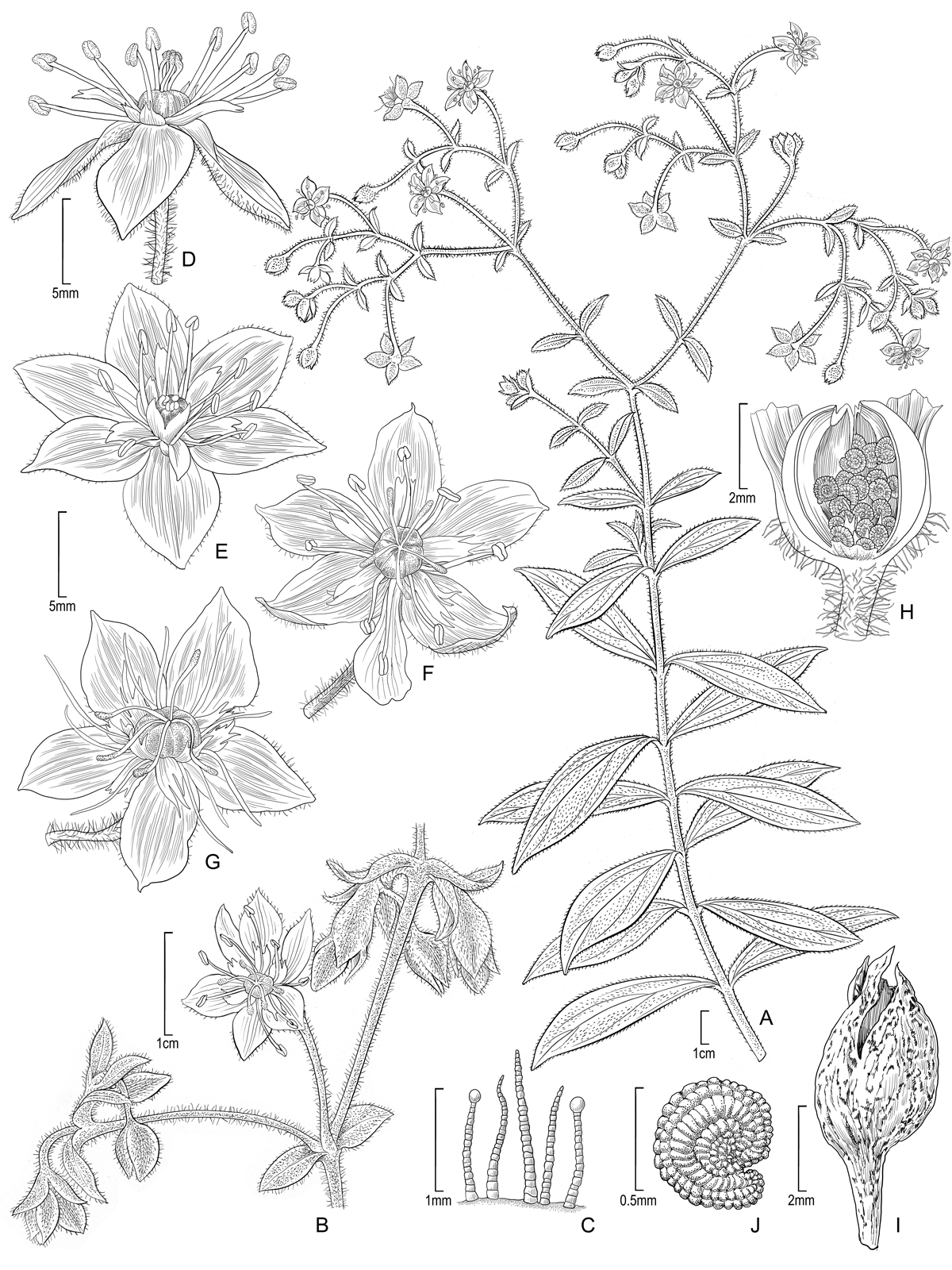By Jon Letman
Scientists in Hawai‛i have achieved what is believed to be the first new species discovery using aerial drone technology. Researchers from the National Tropical Botanical Garden (NTBG), Outreach Robotics, and Hawai‛i’s Division of Forestry and Wildlife, discovered a previously unknown cliff-dwelling plant using drones and a robotic collecting arm on the island of Kaua‛i.
The plant, Schiedea waiahuluensis, is a member of the carnation family and one of 36 Schiedea species native to Hawai‛i, twelve of which are found only on Kaua‛i.
The discovery reveals new possibilities for plant conservation in extreme cliff habitat and also yielded the collection of a tiny native insect called a mirid bug which, if proven to be a new species, may also be the first collected by drone.
First photographed by NTBG drone operator Ben Nyberg in January 2022, the Schiedea was presumed to be a species classified as extinct. In March 2022, after plant cuttings were collected using a robotic arm called the Mamba, researchers believed they had found a new species.
Seeds from the plants were sent to botanists Ann Sakai and Steve Weller at the University of California, Irvine who specialize in the genus Schiedea. Examination of plants grown from seed confirmed it was indeed a species new to science. They said using drones provides detailed information on plant population size and enhances the ability to develop more comprehensive conservation planning.
Research botanist and NTBG McBryde chair of Hawaiian Plant Studies Warren Wagner of the Smithsonian Institution and NTBG senior research biologist Ken Wood named the species Schiedea waiahuluensis for the region in which it was discovered.

Drone collected specimen with endemic mirid bug on upper right bud. Photo by Ben Nyberg.
Follow up collecting using drones and the Mamba have provided additional seeds and herbarium specimens. Scientists estimate the new Schiedea numbers around 345 individual plants known only from inaccessible rocky cliffs.
NTBG’s drone operator, Ben Nyberg, called use of the new technology “a game-changer for extreme cliff habitats.”
Schiedea waiahuluensis habitat. Photo by Ben Nyberg
“We are learning so much about these often overlooked environments with drones and the Mamba robotic arm assisting plant conservation in ways we never thought possible,” Nyberg said.
Wagner, lead author of a paper describing the new Schiedea in the open-access journal PhytoKeys, said, “using drone technology increases chances to better understand the diversity of lineages in Hawai‛i in sheer cliff habitat. Moreover, combining drone technology with field collecting and research programs will decrease the impact on sensitive areas and allow for more effective surveys of invasive species.”
Photo by Ben Nyberg
While discovery of Schiedea waiahuluensis is the first of its kind, it isn’t the first time NTBG, Quebec-based Outreach Robotics, and Adam Williams, a botanist at Hawai‛i’s Division of Forestry and Wildlife, have successfully located and collected rare plants on Hawai‛i’s high cliffs. In 2019, NTBG used a drone to rediscover Hibiscadelphus woodii, a hibiscus relative previously thought to have gone extinct.
Since 2022, NTBG and its partners, including the Plant Extinction Prevention Program, have used drones to locate and collect plant material from at least 15 rare and endangered native Hawaiian plant species in extreme cliff habitat.
Tiffany Knight, NTBG’s director of science and conservation said, “NTBG has a long history throughout the Pacific of improving our understanding of plant diversity through floristic discovery — finding and describing new plant species and rediscovering species that were presumed extinct. Discovering and collecting this new Schiedea demonstrates the conservation value of employing new technology and our tools and capacity just keep getting better.”

Schiedea waiahuluensis. Illustration by Alice Tangerini/Smithsonian Institution
Read more about the discovery of Schiedea waiahuluensis at https://blog.pensoft.net/2024/10/09/drone-discovers-new-plant-species-in-hawaii/ and read the newly published description at https://doi.org/10.3897/phytokeys.247.130241.
Further inquiries may be directed to media@ntbg.org.